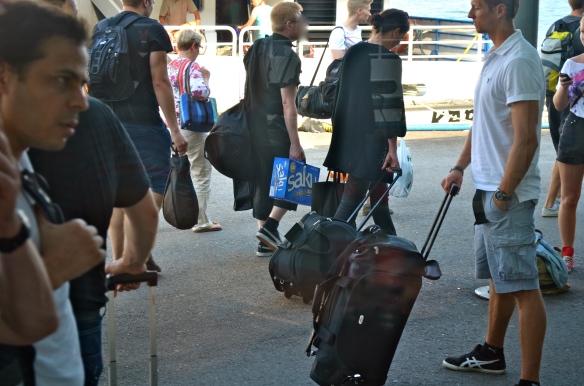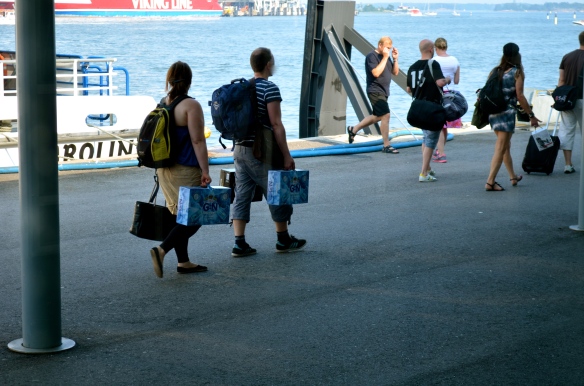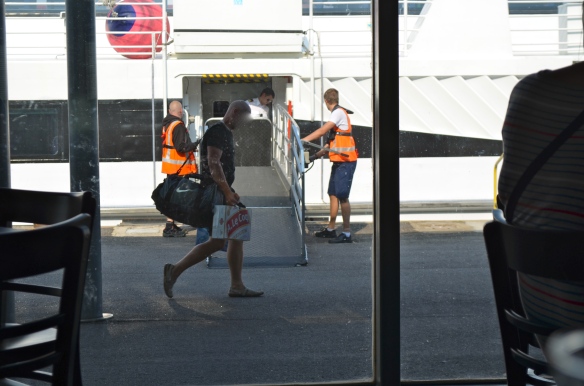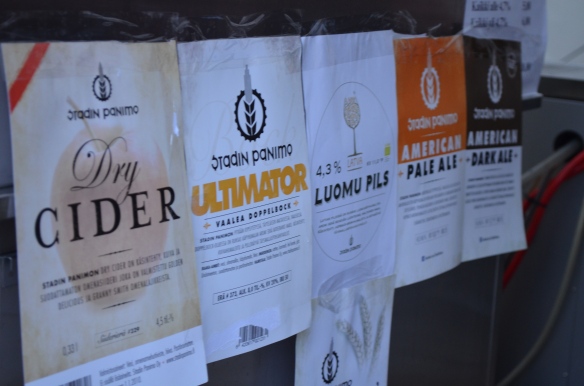
I don’t normally post about past vacations. Since it’s St. Patty’s Day, I’m celebrating by posting about our tour of Dublin’s Guinness Storehouse (before meeting up with some Irish ladies).
Although it’s a cliché and a bit of a tourist trap, the Guinness Storehouse is Ireland’s number one tourist attraction. When we were in Dublin, we figured we had to stop by. Most giant brewery tours are similar and Guinness is no exception. The tour is your typical large brewery tour in that it is more like a museum with a lot of advertising than a working brewery and built for tourists. I’m not knocking it because it is a heck of a good time, just setting reasonable expectations.

Located at 1 St. James Gate, the former home of the Guinness brewery (Guinness is now brewed off-site, hence why they call it a storehouse) is an impressive building with a storied history. Guinness. In 1759, Arthur Guinness signed a 9,000 year lease at £45 ($70.77) a year lease brewery!
The Guinness Storehouse is self-guided and it takes at least an hour to see the exhibits. Prepare yourself for marketing, embrace it. If you approach it as 7 floors of Guinness propaganda, it won’t be as much fun.
This facility is devoted to advertising and marketing of the Guinness brand and they do it well. Heck, Guinness markets a lot, has for a long time and does it well. I can’t believe that I am saying a beer tour is an excellent opportunity to learn about marketing and advertising, but it really is. It was truly fascinating to look at the evolution of their ad campaigns. You’ve seen enough posters to know that they are quite funny and the graphics are great.

You also get to see the original copper kettles where they brewed the beer, taste malted barley and either “learn how to pour a perfect pint” or gives you one free beer at the bar upstairs.
The “pour the perfect pint” session, where you learn how to properly pour a pint of Guinness. Unfortunately, it’s quite popular and you may wait quite awhile. On the bright side, you will receive a certificate attesting to your new skill. It is a nice demonstration. People who don’t want the beers they just poured leave them untouched on the counter. Broke college students have been known to ensure that they don’t go to waste.

The Gravity Bar is a huge observatory deck on the Storehouse’s top (7th) floor where you get a 360 view of the city and free Guinness. You’re there for the Guinness and the view. Some claim that Guinness tastes better here than anywhere else in the world. I don’t know if it was the best Guinness ever, but it was a mighty fine one. It could be because Guinness cleans the taps every month, serves at the ideal temperature and it is extremely fresh. Since there’s a constant ready supply and great demand, the beer doesn’t sit around.
The store is massive and contains virtually every piece of beer merchandise ever conceived. Guinness has managed to put a logo on just about everything. Hats, tee shirts, glasses, clocks, mugs, posters, beer signs, pictures, they’ve got it all…and then some. They also sell a ridiculous number of foods made with stout. Given the volume and variety don’t be surprised if the gift store suckers you in. I’m speaking from experience. Like our coasters?

If you are looking for ways to celebrate St. Patrick’s Day, a couple of years ago, we had a Guinness dinner. Every food had Guinness in it. Here’s the menu
I’d list the beverage, but it seems a bit obvious. The soundtrack? Flogging Molly and The Pogues. A good time was had by all.
Happy St. Patrick’s Day! Slàinte!










































 By the way, Belgium is the home of the largest brewery in the world,
By the way, Belgium is the home of the largest brewery in the world, 
















 Amber Ales – Belgium’s Amber Ales are similar to British Pale Ales, but are less hoppy. They are slightly spicy which is balanced by a bit of a yeasty taste.
Amber Ales – Belgium’s Amber Ales are similar to British Pale Ales, but are less hoppy. They are slightly spicy which is balanced by a bit of a yeasty taste.










